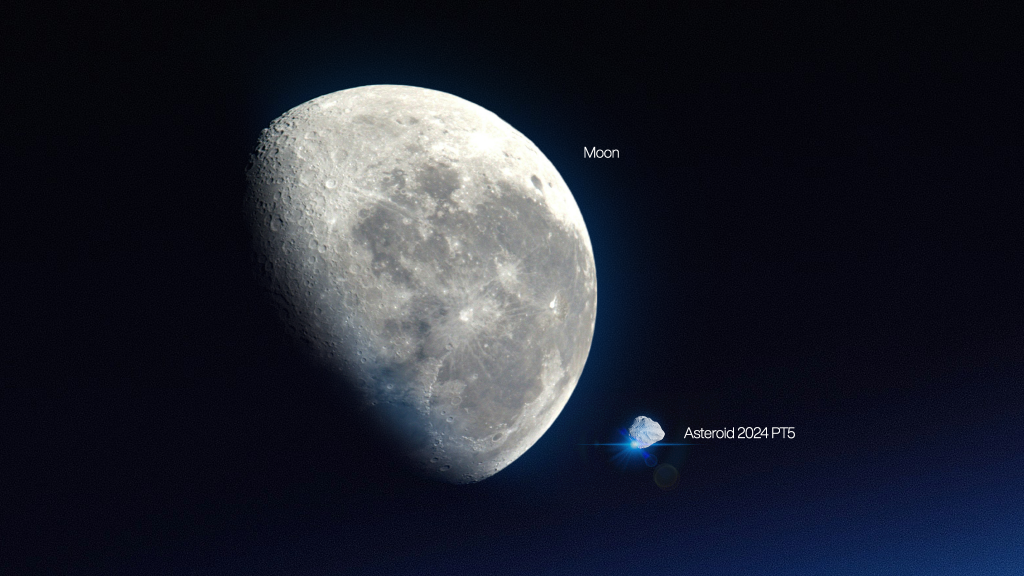
Later this month, Earth will gain a temporary cosmic companion.
A small asteroid, 2024 PT5, detected on August 7, 2024, by the Asteroid Terrestrial-Impact Last Alert System (ATLAS), will enter Earth’s orbit starting September 29 and remain until November 25. Dubbed a “mini-moon,” the space rock will orbit the planet before moving on its journey through the solar system.
Mini-moons, like 2024 PT5, are tiny Near-Earth Objects (NEOs) that occasionally get captured by Earth’s gravity. According to scientists Carlos and Raul de la Fuente Marcos, our planet can trap these small asteroids in its gravitational field for a short time and will transform them into temporary moon-like objects. However, unlike our permanent moon, mini-moons only stay for a few months before breaking free and continuing their path through space.
Though the concept of mini-moons may sound like science fiction, they are a fascinating area of study for astronomers. These objects offer a unique opportunity to observe small asteroids up close, providing valuable insights into their composition and motion. The discovery of 2024 PT5 by NASA marks another step in our understanding of these fleeting celestial visitors.
However, not all scientists agree that 2024 PT5 should be classified as a mini-moon. Lance Bernner, a member of the research team, notes that the asteroid will follow a horseshoe-shaped trajectory rather than completing a full orbit around Earth. Despite this, NASA’s Paul Chodas speculates that 2024 PT5 could be a fragment of the Moon, possibly dislodged by an ancient impact. Others, like Raul de la Fuente Marcos, suggest it could even be space debris. Nevertheless, NASA has confirmed that it is indeed a genuine asteroid.
Although 2024 PT5 won’t be visible to the naked eye, astronomers will be able to track its movements using telescopes and radar. As it orbits Earth, scientists will study its properties, shedding light on how small objects behave in Earth’s gravitational field.
While its visit may be brief, 2024 PT5 provides an exciting glimpse into the dynamic interactions between Earth and the cosmos. Understanding mini-moons could one day help scientists better predict and manage future encounters with NEOs—some of which may have the potential to impact Earth.
Article by Kyla de Paz
